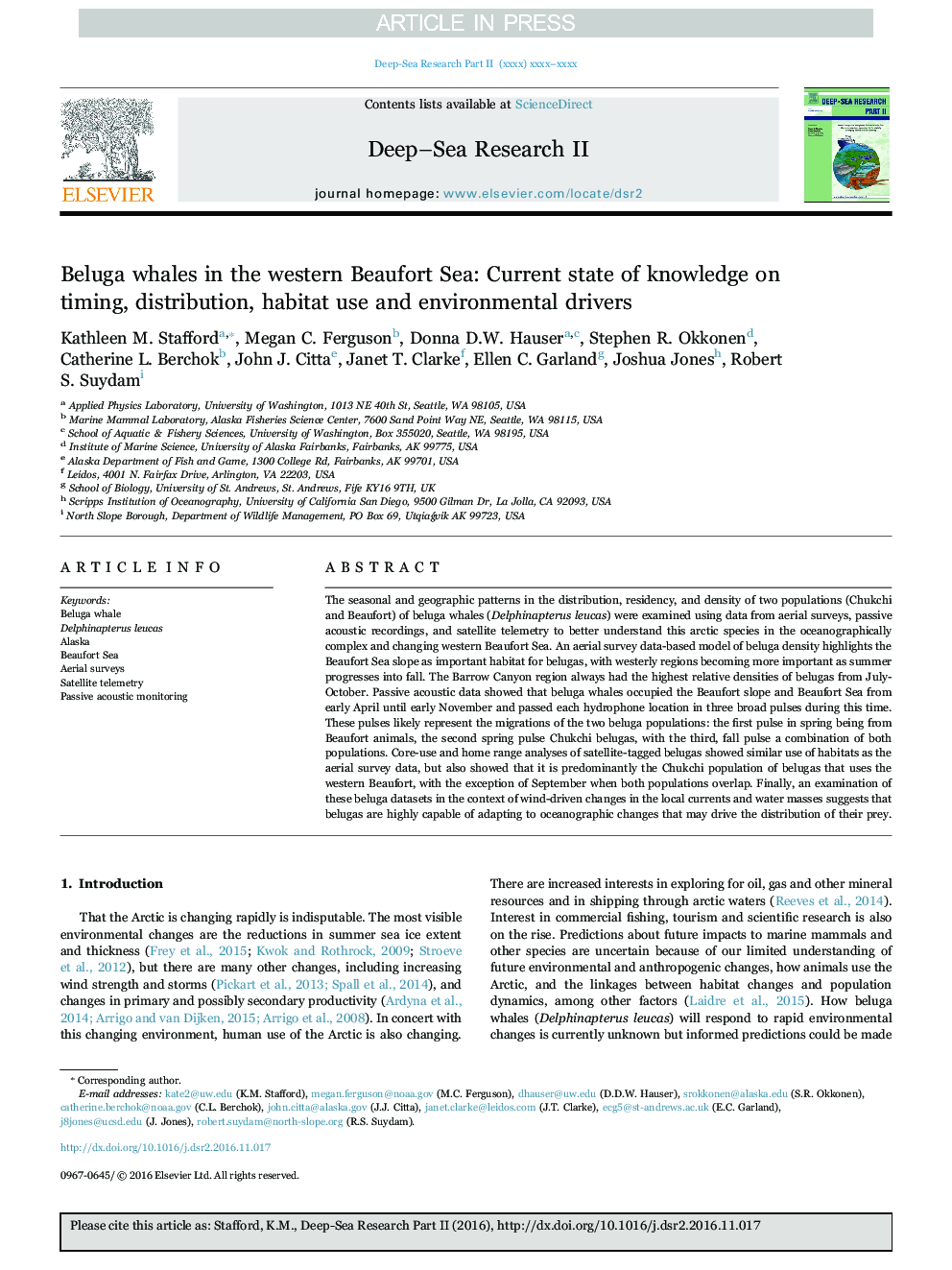| کد مقاله | کد نشریه | سال انتشار | مقاله انگلیسی | نسخه تمام متن |
|---|---|---|---|---|
| 10223814 | 1701057 | 2018 | 13 صفحه PDF | دانلود رایگان |
عنوان انگلیسی مقاله ISI
Beluga whales in the western Beaufort Sea: Current state of knowledge on timing, distribution, habitat use and environmental drivers
ترجمه فارسی عنوان
نهنگ بلوگا در دریای مدیترانه بویورفت: وضعیت فعلی دانش در مورد زمان بندی، توزیع، استفاده از زیستگاه و رانندگان زیست محیطی
دانلود مقاله + سفارش ترجمه
دانلود مقاله ISI انگلیسی
رایگان برای ایرانیان
کلمات کلیدی
موضوعات مرتبط
مهندسی و علوم پایه
علوم زمین و سیارات
زمین شناسی
چکیده انگلیسی
The seasonal and geographic patterns in the distribution, residency, and density of two populations (Chukchi and Beaufort) of beluga whales (Delphinapterus leucas) were examined using data from aerial surveys, passive acoustic recordings, and satellite telemetry to better understand this arctic species in the oceanographically complex and changing western Beaufort Sea. An aerial survey data-based model of beluga density highlights the Beaufort Sea slope as important habitat for belugas, with westerly regions becoming more important as summer progresses into fall. The Barrow Canyon region always had the highest relative densities of belugas from July-October. Passive acoustic data showed that beluga whales occupied the Beaufort slope and Beaufort Sea from early April until early November and passed each hydrophone location in three broad pulses during this time. These pulses likely represent the migrations of the two beluga populations: the first pulse in spring being from Beaufort animals, the second spring pulse Chukchi belugas, with the third, fall pulse a combination of both populations. Core-use and home range analyses of satellite-tagged belugas showed similar use of habitats as the aerial survey data, but also showed that it is predominantly the Chukchi population of belugas that uses the western Beaufort, with the exception of September when both populations overlap. Finally, an examination of these beluga datasets in the context of wind-driven changes in the local currents and water masses suggests that belugas are highly capable of adapting to oceanographic changes that may drive the distribution of their prey.
ناشر
Database: Elsevier - ScienceDirect (ساینس دایرکت)
Journal: Deep Sea Research Part II: Topical Studies in Oceanography - Volume 152, June 2018, Pages 182-194
Journal: Deep Sea Research Part II: Topical Studies in Oceanography - Volume 152, June 2018, Pages 182-194
نویسندگان
Kathleen M. Stafford, Megan C. Ferguson, Donna D.W. Hauser, Stephen R. Okkonen, Catherine L. Berchok, John J. Citta, Janet T. Clarke, Ellen C. Garland, Joshua Jones, Robert S. Suydam,
